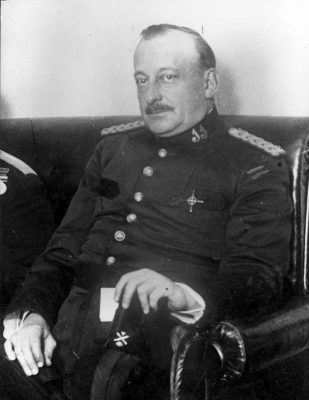
by: Janet Aslin, Assistant Editor
Jewish people settled in the land of Egypt for millennia, ever since Abram, the patriarch, “…went down to Egypt to dwell there, for the famine was severe in the land” (Gen. 12:10). Throughout the centuries, Egypt seemed to provide a good escape from the troubles that periodically descended upon Israel and a number of biblical personages made the journey. At times the Jewish population enjoyed stability, prestige and wealth in their adopted land. But as always, living in the Diaspora is an unpredictable experience and there came a time when this proved especially true for those who had remained in Egypt.
The secret story of the rescue of the Jewish population of Cairo in the late 1960s has only now begun to come to light. Although the number of people who fled Egypt was far less than during the Exodus at the time of Moses, their story is no less compelling.
The Jewish population of Cairo in the mid-1940s was a vibrant 80,000 souls. Although many of them voluntarily made aliyah (immigrated) once Israel declared its statehood in 1948 or were forcibly expelled by President Gamal Abdel Nasser’s government in 1956–57, there were still as many as 4,000 Jews living in Egypt when the Six Day War of 1967 broke out. They found themselves at the mercy of a nation that had been humiliated in battle by tiny Israel and the Egyptians were determined to make them suffer.
Nearly 20% of the Jewish population was immediately arrested and thrown into the Abu-Zabaal military prison just outside Cairo. There they were beaten by the military guards and suffered interrogations and torture. Fifty years later, Ovadia Yerushalmi, one of those imprisoned recalled his experiences, “It was terrible, inhuman and humiliating. We were arrested and imprisoned for two years without cause. We were placed 72 people in a small cell without the minimum hygienic conditions. We were beaten and insulted day and night to avenge their defeat in the war.”
Even if they were not imprisoned, many of the remaining Jewish population were essentially stateless, having no official documents by which they could flee the country. Their rescue came from an unexpected source—the nation of Spain which had no diplomatic relations with Israel and in fact, had not even recognized the modern Jewish state. Enter the Spanish ambassador to Egypt—Angel Sagaz Zubelzu.

Primo de Rivera, the Spanish dictator who issued a decree in 1924 that was the basis for the release of the Jewish people from Egypt in 1967. (Bundesarchiv, Bild 102-09414/wikipedia.org)
Sagaz’s plan to free the Egyptian Jews from prison, and ultimately from Egypt, relied on a decree issued in 1924 by a Spanish dictator whose name was Primo de Rivera. Under that decree, any Sephardic Jew was considered a Spanish citizen and therefore eligible for protection from the Spanish government. Forty-three years later, Ambassador Sagaz would put this decree to good use.
This was not a novel idea. During World War II, the provision of official documentation by a sovereign state had been used successfully to help Jewish people escape from the Nazis. Several notable examples were the Japanese diplomat Chiune Sugihara who offered transit visas to thousands of Jews in Lithuania and Raoul Wallenberg who provided Swedish protection to Hungarian Jews. Interestingly, another Spanish diplomat named Angel Sanz-Briz used the same 1924 decree to rescue 5,000 Hungarian Jews during the Holocaust.
Lobbying tirelessly with the police, the Egyptian Minister of Interior and even with Nasser himself, Sagaz argued that the Jewish prisoners in Egypt were under Spanish protection. The Spanish government was in the perfect position for the secret operation. As stated previously, it had never recognized the State of Israel and, in fact, was on very good terms with most Arab countries in the region. Spain was not suspected of any pro-Zionist leanings. The close friendship between Ambassador Sagaz and President Nasser also helped to bring the negotiations to a successful conclusion.
Armed with the position that the members of the Jewish population were Spanish citizens, Sagaz offered to make arrangements for them to leave Egypt and to provide the necessary funds to make the trip. The agreement Sagaz reached with Nasser’s government had two main conditions. First, those who had been in prison were to maintain absolute silence about what they had experienced there. Second, those who left could not go immediately to Israel. For these reasons, the story of deliverance for the Jewish population from Egypt is only now becoming known.
Initially the first groups of refugees left from Alexandria aboard Spanish ships headed to Marseilles, Genoa or Barcelona. Later on they traveled by plane. At the moment of their departure, the fleeing Jews received Spanish passports which were only valid for a period of two years and could not be renewed. However, they accomplished their purpose, which was to enable the holders to escape the oppressive conditions they were living under. The Spanish government also provided a back-door by which money raised by the Jewish community in the Diaspora could be funneled to the refugees to help with their resettlement.
During the period between 1967 and 1970, more than 1,500 Jews left Egypt with the help of the Spanish government. In 1970, Sagaz wrote that there were no more than 1,000 Jews left in the country. Sagaz himself departed in early 1972 to become the Spanish ambassador to the United States.
At the time of their greatest need, the Jewish residents of Cairo found help from a man within whom God had placed the willingness to do whatever it took to see the captives set free.
All logos and trademarks in this site are property of their respective owner. All other materials are property of Bridges for Peace. Copyright © 2025.
Website Site Design by J-Town Internet Services Ltd. - Based in Jerusalem and Serving the World.